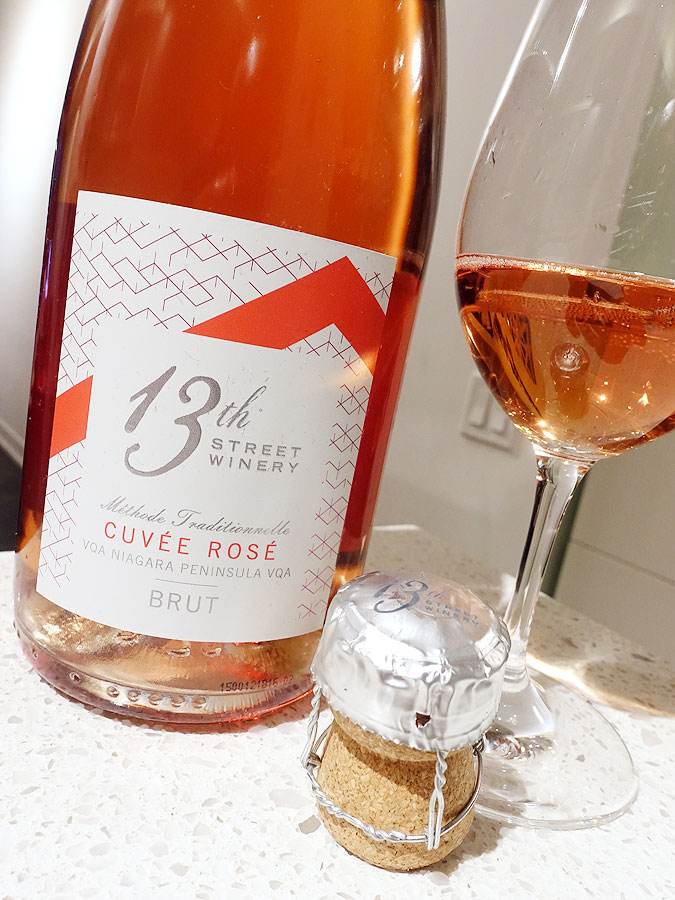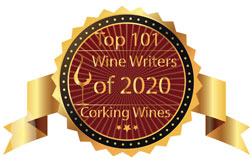wine reviews are a pair of nice organic red wines by St. Stephen Organic Vineyards from Chile. Both are currently only available via their Agent - Don Ackerman's Wines & Spirits, and may potentially appear in LCBO VINTAGES some time next year.
St. Stephen Organic Vineyards is a family-owned and -operated winery located in the Colchagua Valley at the base of the Andes Mountains. The primary focus is on creating flavourful wines that begin with the sun, soil, temperature, and water. There is little-to-no rainfall during the fruit-bearing months, and because they are situated at the base of the Andes, this provides a plentiful supply of pure snowmelt water. The rich, volcanic soils located in this area are particularly well-suited for winegrowing, especially Cabernets.
The grapes are grown 100% organically using sustainable agricultural methods, and without the use of any preservatives, pesticides, fungicides, herbicides, or other toxicant. All of the grapes at St. Stephen are grown and harvested by hand to reduce bruising and preserve the sugar and flavours of the grapes, followed by rigorous sorting and quality control through to the use of the finest quality French oak barrels to ensure that the final wine is of high quality.
The winemaking process is artisanal, deliberate and flexible. With no two vintages ever the same, the winemaking team is constantly evaluating and adapting to ensure they are able craft the best possible quality of wine. The goal is to create delicious, consistent, unique, and memorable wines.
With a strong commitment to organic agriculture, sustainability, and the general welfare of the planet, a portion of the proceeds from each bottle of St. Stephen wine purchased benefits environmental organizations committed to protecting our planet, expanding national parks and wildlife refuges, reducing pollution, defending our oceans, moving beyond fossil fuels, reducing plastic consumption, and slowing climate change. In recognition of their efforts, St. Stephen Organic Vineyards was invited to address the United Nations Climate Change Division's Annual Conference (COP25) in Madrid in December 2019, joining other speakers such as Speaker of the House Nancy Pelosi and Environmental Activist Greta Thunberg.
100% Cabernet Sauvignon from dark, rich, volcanic soils that are composed of red granite, andesite,
basalt, and rhyolite. An Ode to Wine, the medium+ intensity nose offers red berry, raspberry, currant, and strawberry aromas with wood spice notes that nicely accent the fruit. It's medium-full bodied on the palate with slightly tart red fruit flavours joined by savoury oak, cocoa notes. It has fresh acidity, while the dry tannins are quite grippy and chalky. Savoury, earthy, and cocoa flavours with a touch of smoke linger on the long, dry finish. Score: 89 pts
ST. STEPHEN AM MALBEC RESERVA 2016 - Curicó Valley, Chile (XD) - $29.10
"Am" means "soul" or "spirit" in the Mapuche language. 100% Malbec grown on dark, rich, volcanic soils. The nose is quite intense with bretty, barnyard, and savoury tones with some dark berry notes adding some fruit characters. It's medium-bodied on the palate with dark berry, boysenberry, and raspberry flavours surrounded by savoury, earthy notes. Acids are fresh and well-balanced while the soft, rounded tannins have a slight textural grip. There's some warmth on the mid-palate. while savoury-earthy tones continue through to the finish, with very good length. Score: 88 pts
St. Stephen Organic Vineyards is a family-owned and -operated winery located in the Colchagua Valley at the base of the Andes Mountains. The primary focus is on creating flavourful wines that begin with the sun, soil, temperature, and water. There is little-to-no rainfall during the fruit-bearing months, and because they are situated at the base of the Andes, this provides a plentiful supply of pure snowmelt water. The rich, volcanic soils located in this area are particularly well-suited for winegrowing, especially Cabernets.
The grapes are grown 100% organically using sustainable agricultural methods, and without the use of any preservatives, pesticides, fungicides, herbicides, or other toxicant. All of the grapes at St. Stephen are grown and harvested by hand to reduce bruising and preserve the sugar and flavours of the grapes, followed by rigorous sorting and quality control through to the use of the finest quality French oak barrels to ensure that the final wine is of high quality.
The winemaking process is artisanal, deliberate and flexible. With no two vintages ever the same, the winemaking team is constantly evaluating and adapting to ensure they are able craft the best possible quality of wine. The goal is to create delicious, consistent, unique, and memorable wines.
With a strong commitment to organic agriculture, sustainability, and the general welfare of the planet, a portion of the proceeds from each bottle of St. Stephen wine purchased benefits environmental organizations committed to protecting our planet, expanding national parks and wildlife refuges, reducing pollution, defending our oceans, moving beyond fossil fuels, reducing plastic consumption, and slowing climate change. In recognition of their efforts, St. Stephen Organic Vineyards was invited to address the United Nations Climate Change Division's Annual Conference (COP25) in Madrid in December 2019, joining other speakers such as Speaker of the House Nancy Pelosi and Environmental Activist Greta Thunberg.
Tasting Notes:
ST. STEPHEN ODA AL VINO CABERNET SAUVIGNON RESERVA 2017 - Colchagua Valley, Chile (XD) - $30.80100% Cabernet Sauvignon from dark, rich, volcanic soils that are composed of red granite, andesite,
basalt, and rhyolite. An Ode to Wine, the medium+ intensity nose offers red berry, raspberry, currant, and strawberry aromas with wood spice notes that nicely accent the fruit. It's medium-full bodied on the palate with slightly tart red fruit flavours joined by savoury oak, cocoa notes. It has fresh acidity, while the dry tannins are quite grippy and chalky. Savoury, earthy, and cocoa flavours with a touch of smoke linger on the long, dry finish. Score: 89 pts
ST. STEPHEN AM MALBEC RESERVA 2016 - Curicó Valley, Chile (XD) - $29.10
"Am" means "soul" or "spirit" in the Mapuche language. 100% Malbec grown on dark, rich, volcanic soils. The nose is quite intense with bretty, barnyard, and savoury tones with some dark berry notes adding some fruit characters. It's medium-bodied on the palate with dark berry, boysenberry, and raspberry flavours surrounded by savoury, earthy notes. Acids are fresh and well-balanced while the soft, rounded tannins have a slight textural grip. There's some warmth on the mid-palate. while savoury-earthy tones continue through to the finish, with very good length. Score: 88 pts

















